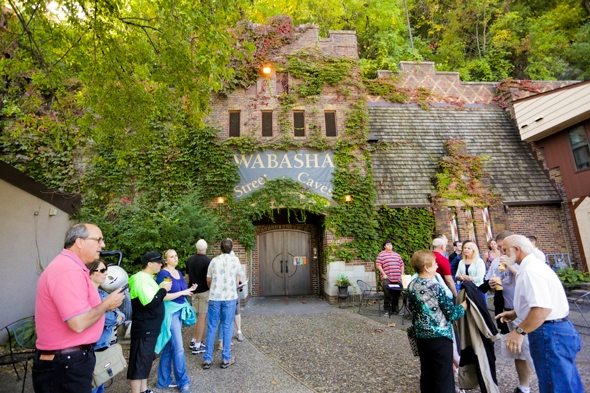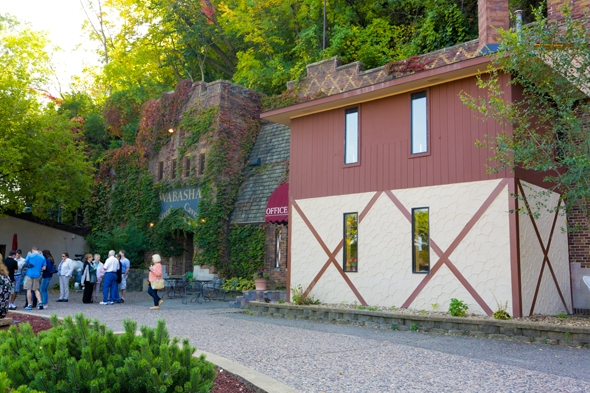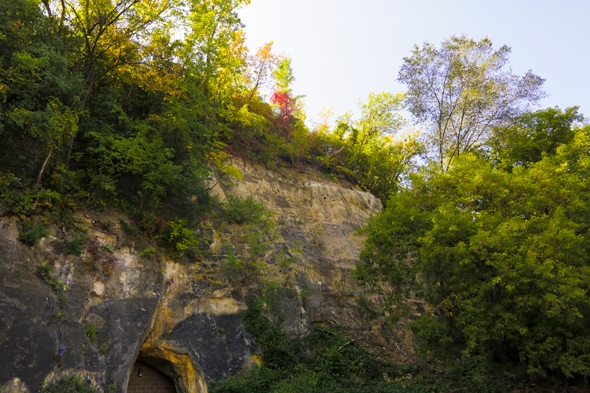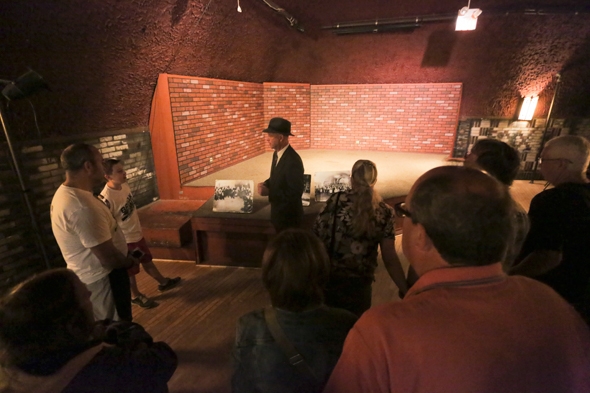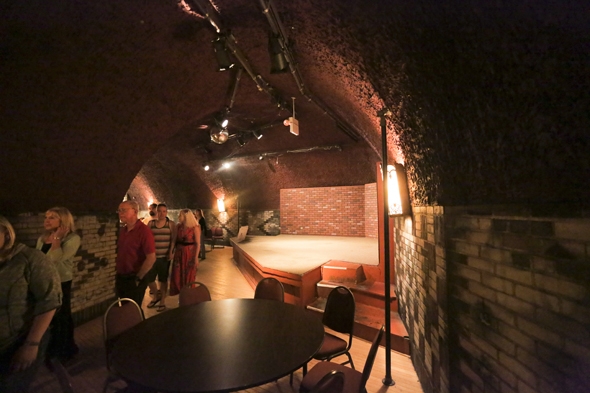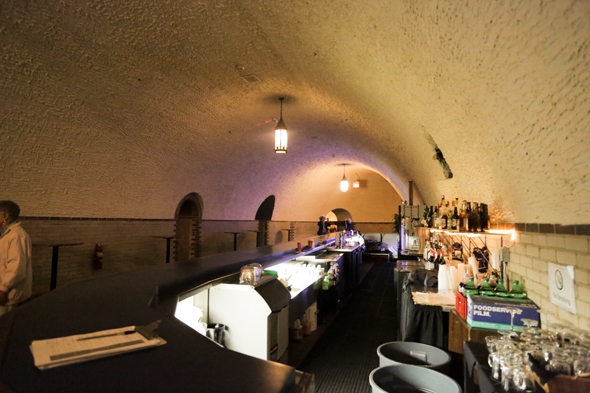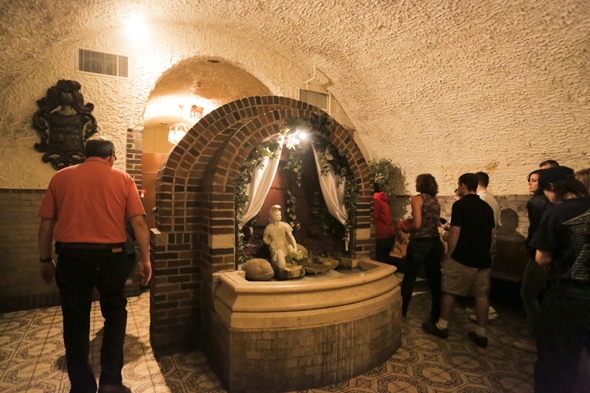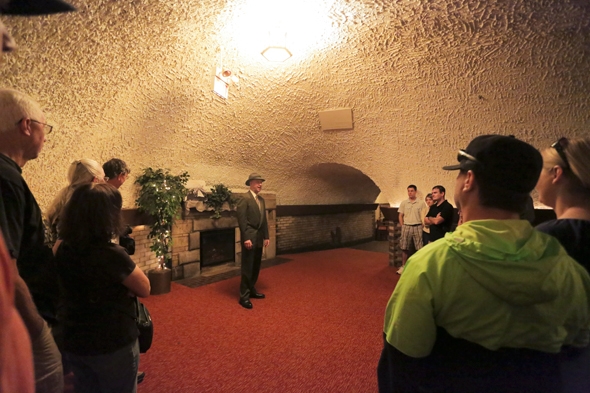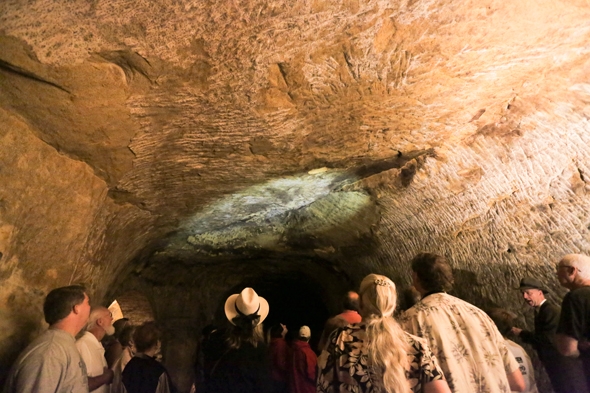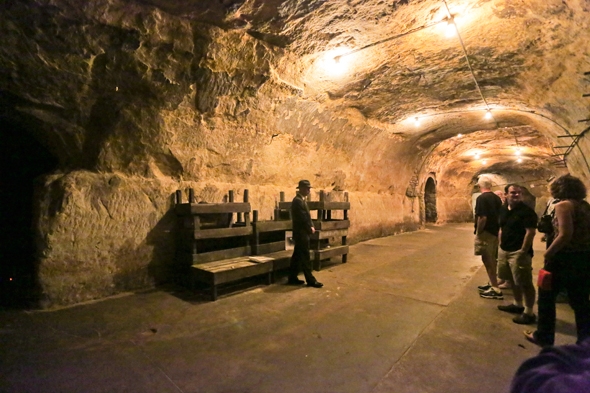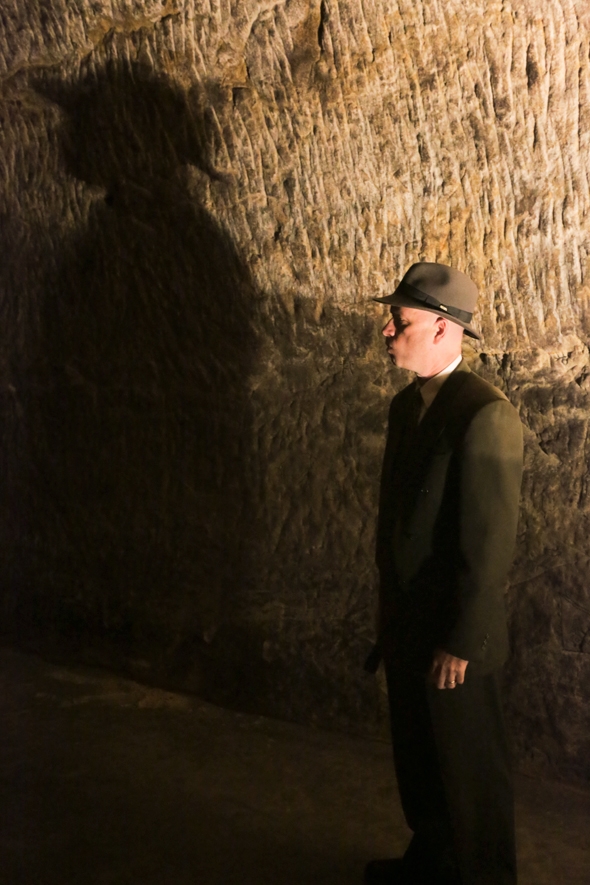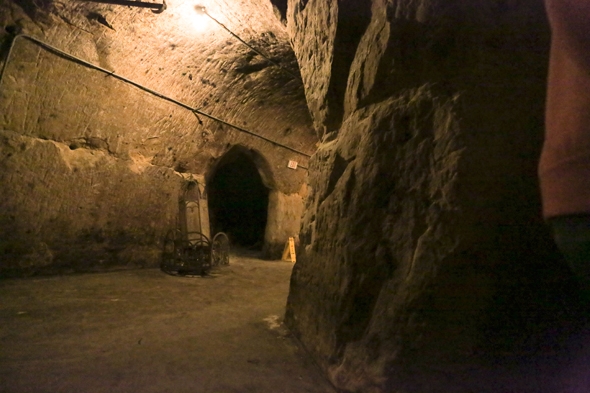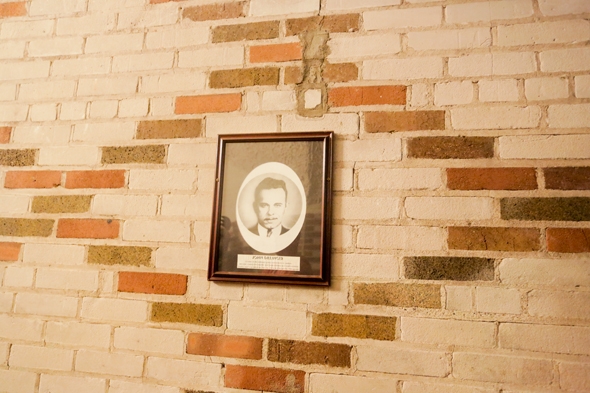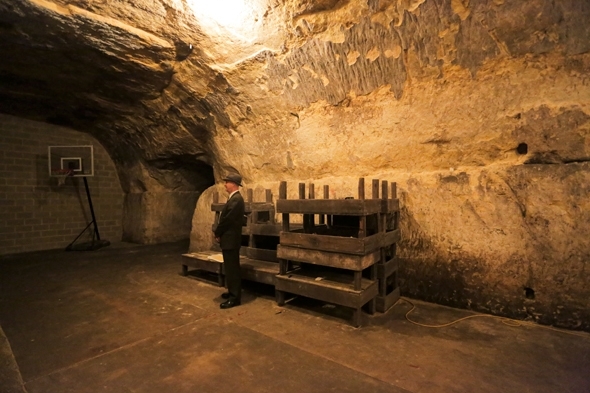
03 Nov Gangster History at the Wabasha Street Caves
St Paul is riddled with fascinating history filled with gangsters, corrupt police officers and caves. One of the best spots to get a peek into this history is at the Wabasha Street Caves in downtown St. Paul. These caves were originally created when the area was mined for silica sand to be used in glass production. Throughout the years, the caves have been home to a variety of businesses such as a mushroom growing facility, multiple restaurants and bars, a speakeasy and even a place for Land O’Lakes to make blue cheese. We recently went on a tour of the caves; we learned a great deal about the city we call home, the mysteries of the caves by the river, and we were transported into daydreams of what it was like to live during the roaring 20’s.
In the early 1900’s, Albert Mouchnotte, an immigrant from France, found the caves and realized they were the perfect place to cultivate mushrooms. He began to grow mushrooms in the caves and sell them to local restaurants, and eventually, his business was handed down to his daughter and her husband, Josie & William Lehmann.
During the Prohibition in the 1920’s, St. Paul was a safe haven for gangsters—they formed an agreement with John O’Connor, the Chief of Police, that if they kept their crime out of the city limits, they could come and go as they pleased with no hassle. Due to the support from the local police force, it was only natural that a speakeasy was opened inside of the cave. After Prohibition ended in the 1930’s, the Lehmann’s opened a restaurant and nightclub called Castle Royale. The restaurant was highly regarded for its cuisine, and meals could be purchased for $1.00; there was also a dance floor with big name bands playing on stage.
Rumor has it that many of the most notorious gangsters passed through the caves, one of whom happened to be John Dillinger himself. Stories have long been told of the caves during this era, but my favorite one has to be the triple murder involving Chicago gangsters. One evening four gangsters were playing poker after everyone had left, when suddenly the one remaining waitress heard gunshots in the Fireside Room where she saw three dead bodies on the ground. She called the police, and they told her to wait outside. A few hours later, the police took her back to the crime scene, which was now miraculously clean with fresh tablecloths and even neatly stacked poker chips. The police told her to never call them again for a false report and the murderer was never found. What happened to the bodies and the murderer? Well, apparently during that time, police would carry an extra uniform with them in order to sneak gangsters out of the crime scene, and the bodies are said to have been buried in the back rooms of the caves. The only remaining evidence of this event are the bullet holes that were left in the fireplace.
In 1941, the nightclub was closed due to WW2, and the caves were once again converted into a place for mushroom cultivation until 1965 when the Lehmann’s sold the caves and set up their new facility in Lake Elmo. After floods, fires started by the homeless, and a few failed business attempts, the caves fell victim to bankruptcy and landed in the hands of a bank. When the caves were flooded, they ended up getting filled with trash–only the front couple rooms were cleared out, and the rest are still blocked with trash.
The bank ended up taking everything inside and just as they were getting ready to tear down the outside façade, the caves were once again purchased with the goal to restore the caves to their former glory. Club Royale was reopened and is now called the Wabasha Street Caves—the spot we all know and love today.
In addition to an interesting history, the Wabasha Street Caves are home to a restaurant and bar. Thursday nights at the caves are “Swing Night” and it is so much fun—swing dance lessons are offered at the start of the evening and music is provided by a rotating schedule of jazz bands. In addition to seasonal tours offered throughout the year, regularly scheduled tours of the caves are offered multiple times throughout the week. You can take the Historic Cave Tour or the Lost Souls Tour, which are both walking tours, or there is an option for a longer Gangster Tour, which is part bus ride and part walking. We opted for the basic Historic Walking Tour, but now I want to go back on one of the other tours to hear even more exciting stories about the history of the caves and the city of St. Paul.


